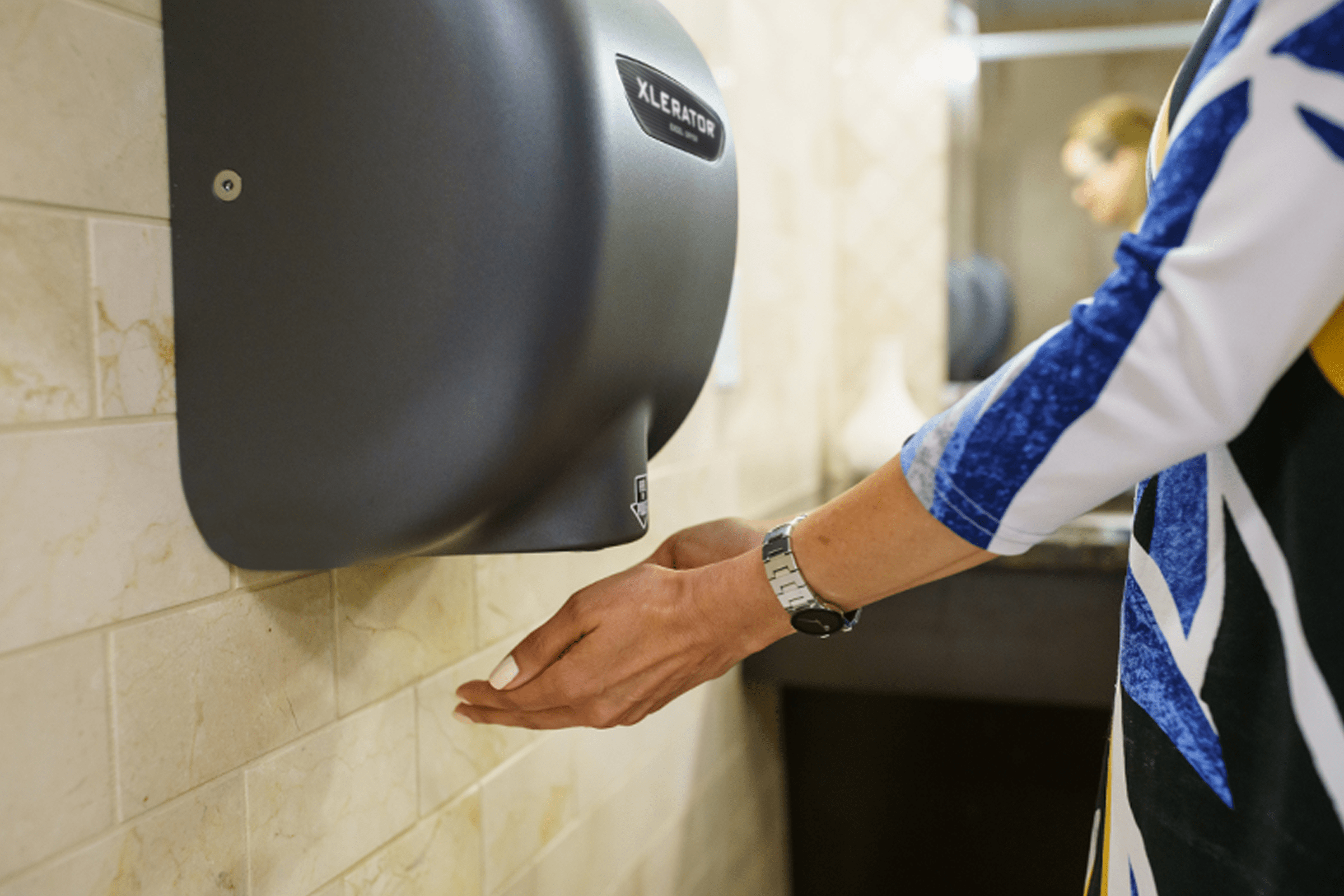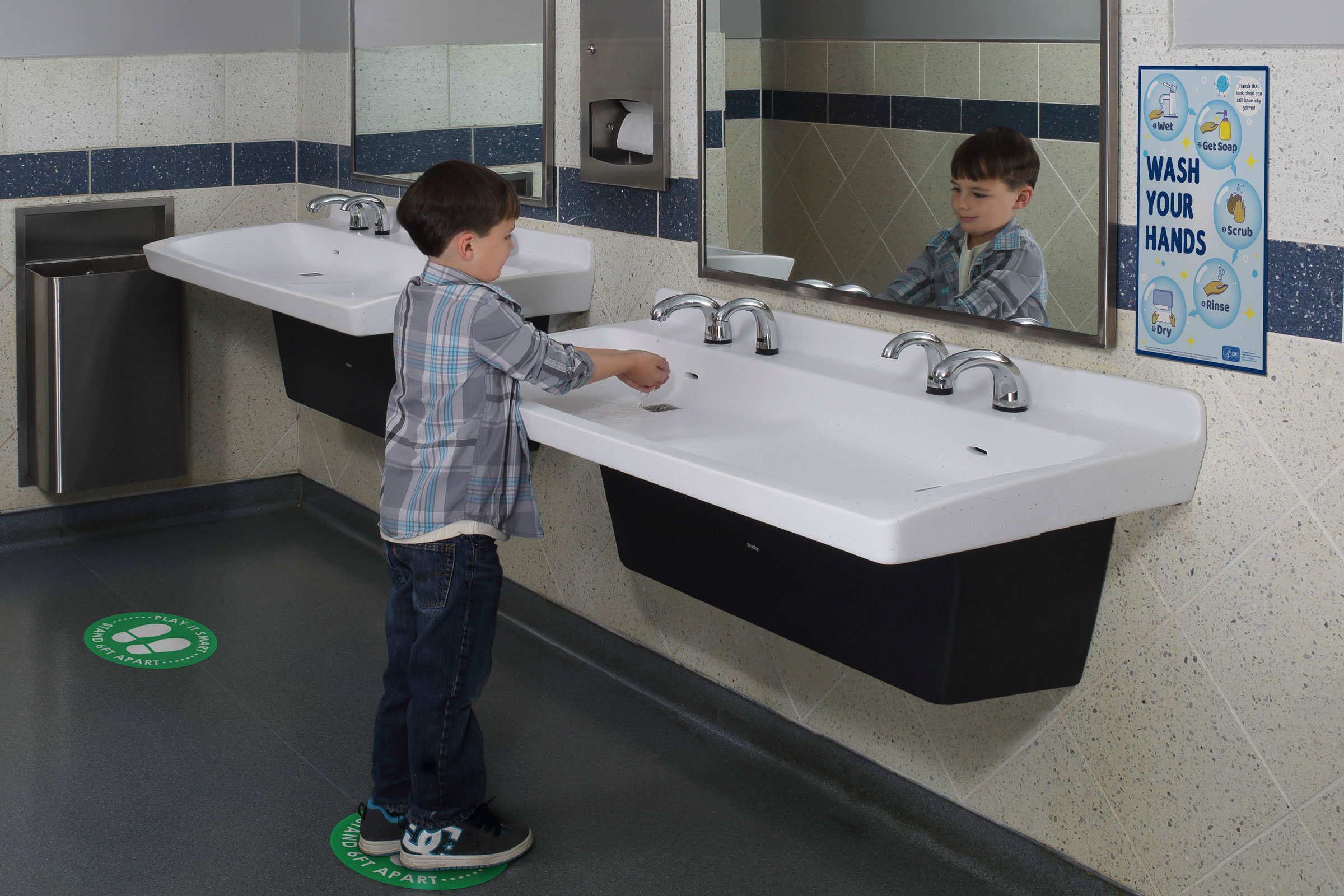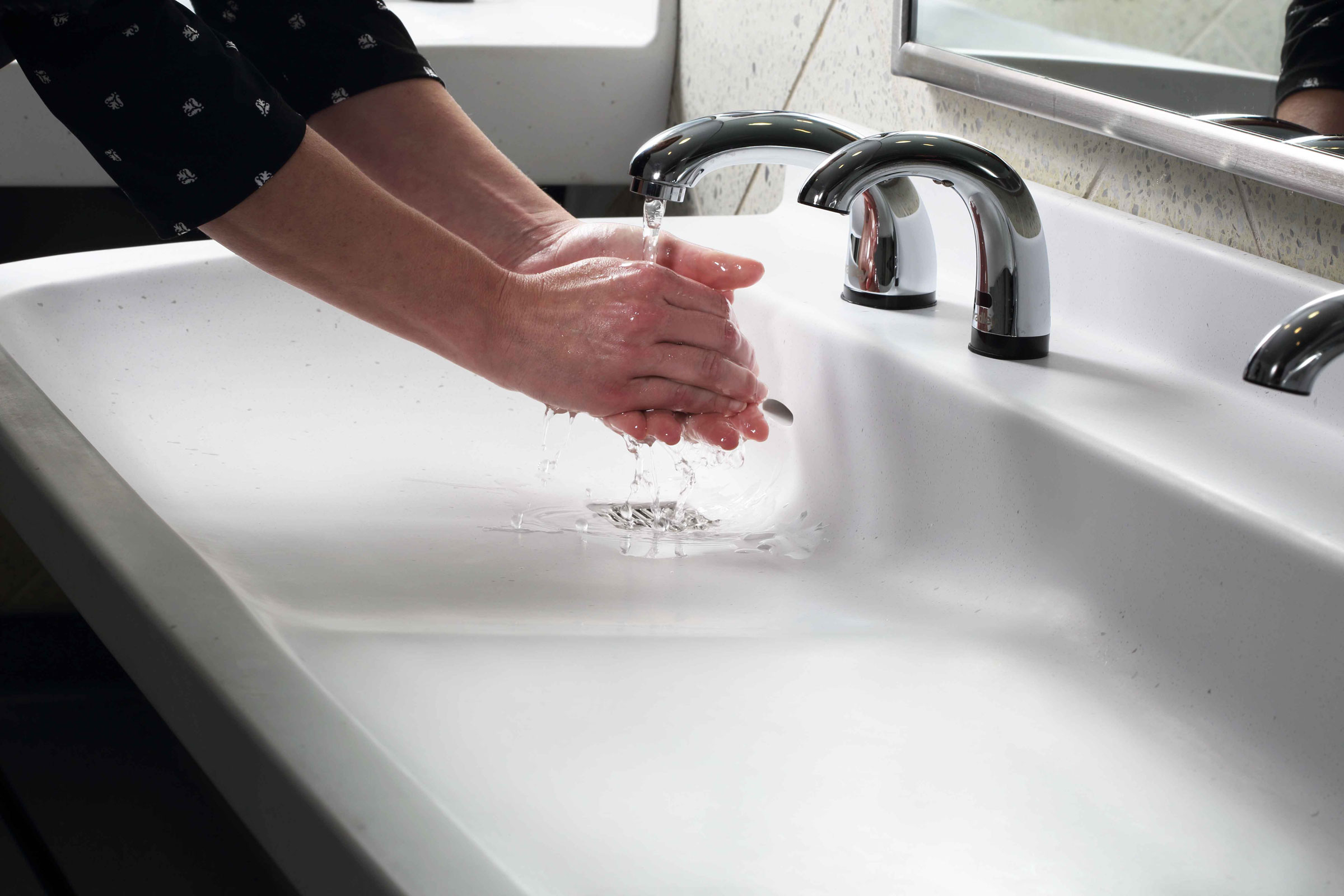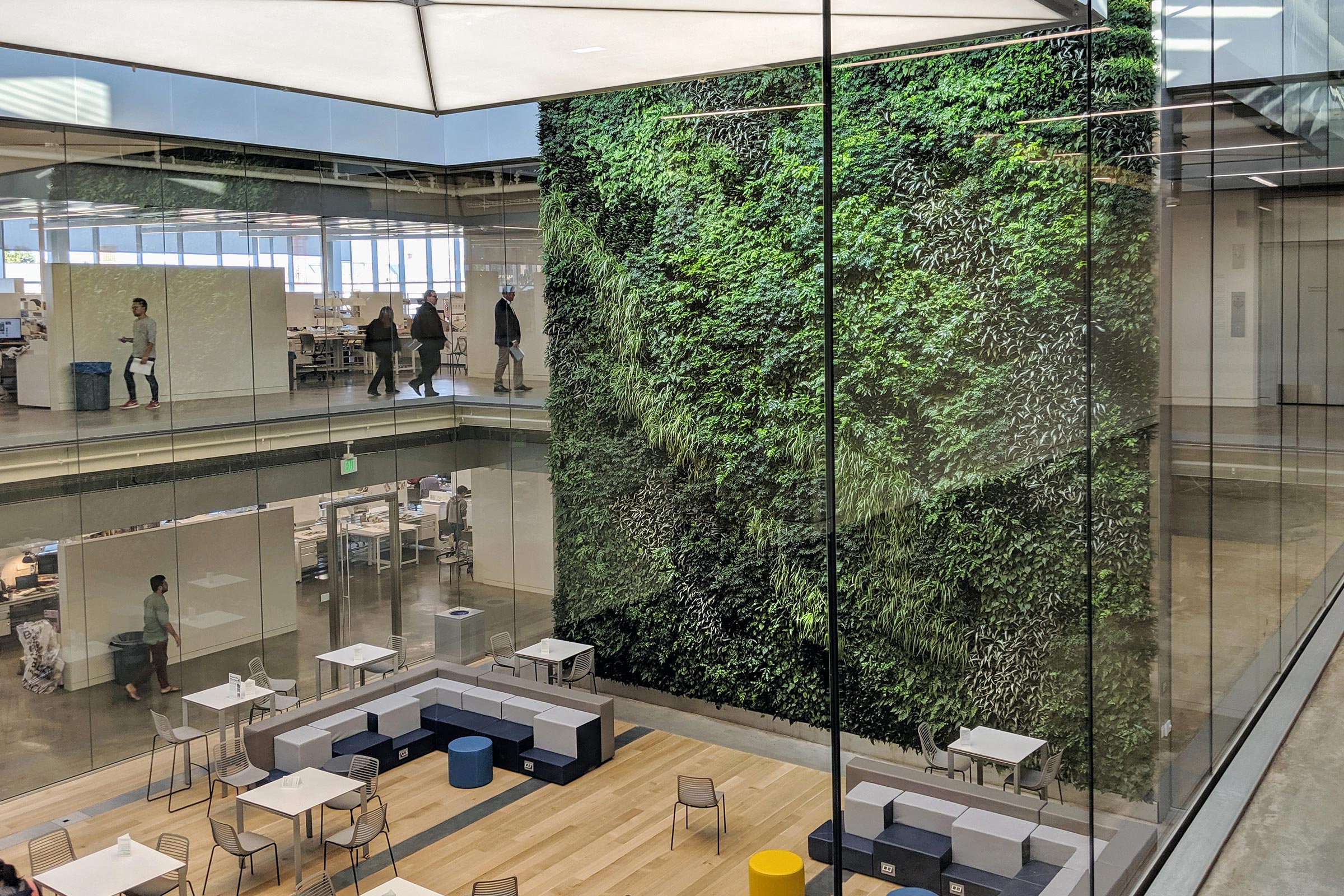Story at a glance:
- Hand dryers can have up to a 75% reduced carbon footprint compared to paper towels.
- With enhancements, traditional HVAC units can improve air filtration.
- Copper and silver are natural antimicrobial surfaces.
Perhaps now more than ever before, knowing how to design a hygienic bathroom is crucial for architects and builders. COVID-19 has brought hygiene to the forefront of everyone’s minds, and places like bathrooms should respond to those concerns with touchless technology, improved air quality, and more.
And beyond feeling safe and hygienic, architects are looking to design bathrooms that are easy to keep clean and aesthetically pleasing, too. Messes caused by wet hands or used paper towels can be avoided with the implementation of products like a hands-free faucet or hand dryer. These hygienic solutions can also be eco-friendly.
Here are six tips to design a clean and safe bathroom.
1. Go touchless.

Experts from the World Health Organization state that proper hygiene is the best defense against the spread of germs, including coronavirus. Photo courtesy of Excel Dryer
Removing the need to touch a stack of paper towels or faucet heads can instantly improve a bathroom’s cleanliness and spread of germs.
When it comes to hand drying, experts recommend offering a mix of both hand dryers and paper towels. A recently published research study found hand dryers and paper towels to be equally hygienic. However, the waste and all-too-common mess caused by used paper towels makes hand dryers a more appealing option for new bathroom designs.
A touchless hand dryer is not only sanitary, but it also creates a tidy restroom environment, giving visitors peace of mind.
Excel’s XLERATOR® hand dryer has a 75% reduced carbon footprint compared to paper towels and traditional hand dryers. Plus, Hand dryers eliminate the mess of paper towels and reduce the number of touchpoints in a restroom.
2. Turn your HVAC into an active combatant against infection.

HVAC units alone can improve indoor air quality, but enhancements UVGI or BPI systems can take air filtration to the next level. Photo courtesy of LG VRF
Throughout the pandemic, health care facilities have been attaching bacteria-killing enhancements to traditional HVAC units to combat airborne viruses and bacteria, HEAPY‘s Brian Arbogast and Daric Hess told gb&d.
Traditional HVAC provide passive help through improved air filtration. Further enhancements maintain ultraviolet germicidal irradiation (UVGI) or bio-polar ionization (BPI) systems within AHUs or ductwork.
BPI devices are installed in the HVAC unit. An electronic charge from the device generates a plasma field that’s dispersed through the system. This plasma attaches to viruses, bacteria, and gasses to trap them or settle faster than they would have, thus reducing both airborne and surface contaminants.
Another promising technology is dry hydrogen peroxide system (DHP). It can be integrated into an AHU system and dispersed throughout an occupied space via the air system.
3. Pick out antimicrobial surface materials.
While the CDC now reports that it is unlikely for you to pick up COVID-19 from surfaces, having a clean surface top can’t hurt.
Metal ion products like pure silver and copper have been shown to be effective against bacteria and certain viruses. Studies show the COVID-19 virus can survive on copper up to four hours versus stainless steel, which can carry the virus for 10.
Both soapstone and quartz surfaces are highly resistant to bacteria and stains because they are nonporous.
Various textiles, paints, and laminates offer antibacterial finishes—but be mindful, the antimicrobial qualities of these materials are intended to preserve the products’ surface from damage caused by microorganisms rather than prevent the spread of infection, Dianne Dunnell, former director of interior design at Margulies Perruzzi, told gb&d.
The best bet when it comes to an antimicrobial surface is to go with copper, silver, Soapstone, or quartz.
4. Go hands-free.

Public bathrooms in schools can become unsanitary very quickly. Touch-less faucets can help keep bathrooms and children clean. Courtesy of Bradley Corp.
Bradley Corp. produces touch-free bathroom products for public restrooms. Their products range from hands-free soap and sanitizer dispensers to touchless sinks.
In August 2020 Bradley conducted a survey of 1,000 high school students and found that 50% of the students considered their schools’ restrooms to be fair or poor.
Bradley’s first product, a foot activated water fountain, was released in 1921. “The whole concept of touch-free metered water and saving water, that’s not something we started because other companies were starting to go green or because of COVID; we’ve been doing this a very long time,” Will Haas, senior product manager at Bradley, told gb&d in a previous interview.
“The design trend overall in restrooms is going to work to eliminate every single touchpoint possible. That’s top of mind for designers,” Hass said.
5. Set boundaries.
Bobrick, which specializes in washroom accessories, recently released bathroom cubicles and toilet partitions, which provide privacy along with durability.
Bobrick offers a variety of partitions with colors, prices, and limited warranties suitable for different environments. Partitions are ideal for schools and universities, mass transit, standard offices, and industrial facilities.
Bobrick cubicles and partitions are made-to-order. You start by selecting a system style, followed by material and height options. More specifications like patterns and woodgrains can also be added.
6. Select a sleek and sustainable shower drain.

QuickDrain USA’s sleek shower drains can easily modernize any bathroom with a quick application process. Photo courtesy of Oatey Co.
QuickDrain USA‘s PET (polyethylene terephthalate) shower floor panels are sleek and environmentally friendly. Made from rigid-foam, the drain is fabricated from 100%-recycled plastic.
The panels have a clean, contemporary look. They are also easy to install with their linear, flat shape.



